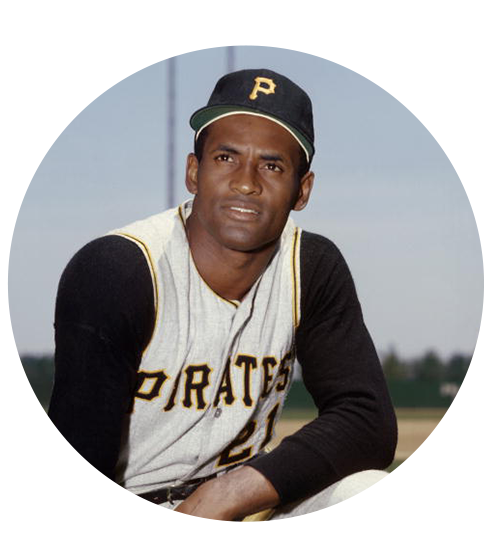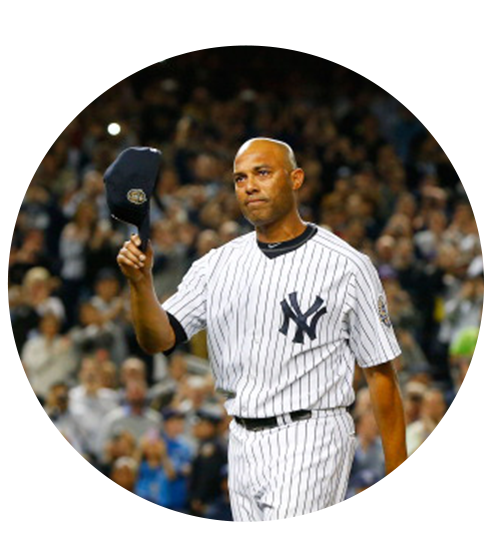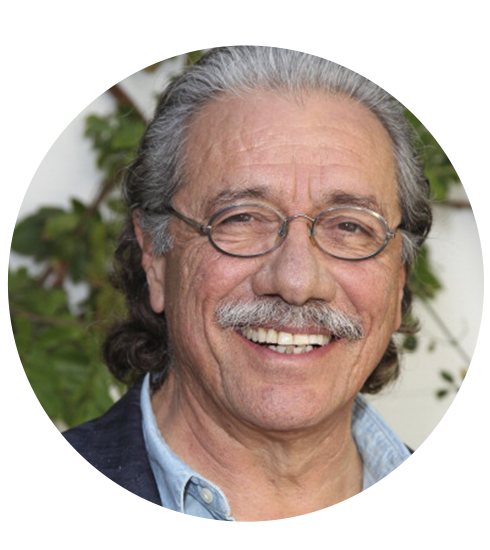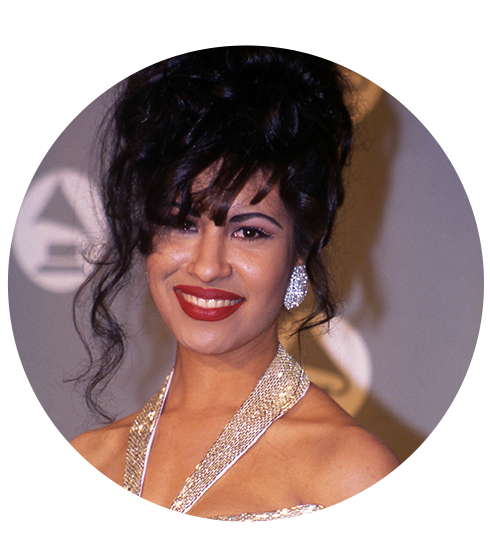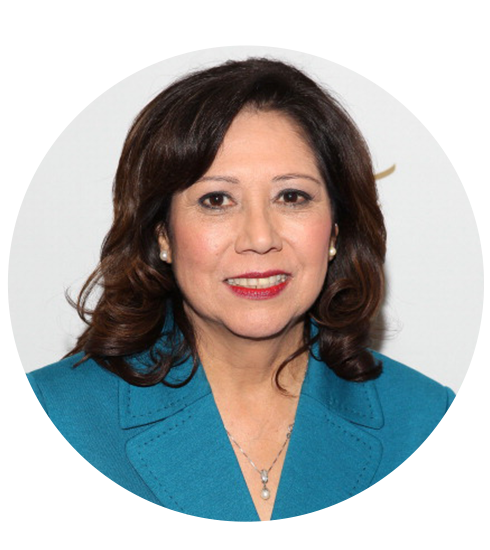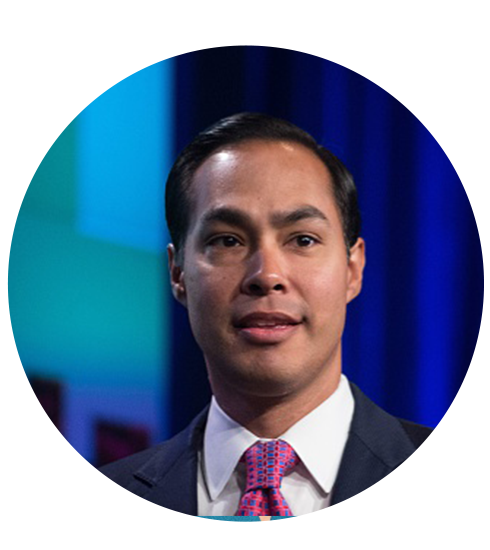Greatness requires perseverance. This is something that is easy to forget when we see celebrities, politicians, and athletes who appear on our screens fully polished, at the top of their game. Many luminaries in various fields overcame incredible challenges over the course of many years to get where they are today. In taking an unusual and arduous path, they were instilled with the values that helped them become great. There are a number of prominent Hispanic figures across numerous disciplines who embody this concept: men and women who not are not only incredibly successful, but found success by taking a path that they can be proud of.
Despite the overwhelming odds and persistent roadblocks that stood in their ways, these role models overcame their particular challenges and then found ways to give back to their communities. Not only did they operate with courage and integrity, but they have actively encouraged others to follow the road that they helped pave. Forging one's own path can be a lonely road, but when these people look back on their lives, these notable Latinos can say that they each took a journey that was just as impressive as the destination. Not only have they found success, but they’ve made an impact that will be felt for years to come.
Ted Williams
Irish on his father’s side and Mexican on his mother’s, Williams played baseball at a time when there were few non-whites in the game. Sadly, Williams had to publicly downplay his heritage while playing, but his friends and family have said that he was proud of his Mexican roots. Williams found early success in the major leagues. In 1941, his third season, he became the last MLB player to bat over .400, and he won the Triple Crown in 1942. However, he stepped away in his prime to serve in the U.S. Marine Corps from 1943-1945. He demonstrated endurance by returning to form after active duty and recaptured the Triple Crown in 1947. He proved his loyalty to his country was unwavering when he later returned to the Marine Corps to serve in the Korean War. His service in the Korean War included 39 separate missions. On several occasions he was hit by enemy fire, but managed to survive to fight another day.
Predictably, Williams’ wartime service earned him media attention. In response to the positive press, he said, "I was no hero. There were maybe 75 pilots in our two squadrons and 99 percent of them did a better job than I did. But I liked flying. It was the second-best thing that ever happened to me. If I hadn't had baseball to come back to, I might have gone on as a Marine pilot." After the conflict, he again returned to baseball. He won the AL batting crown twice more at ages 39 and 40, before finally retiring in 1960.
Roberto Clemente
Clemente was one of the greatest baseball players of his era, and, as such, was adored in his native Puerto Rico. This inspired him to give back: much of his offseason was spent doing charitable work there and in countries like Nicaragua. Clemente dreamed of creating a “Sports City” in San Juan to provide Puerto Rican children access to athletic training. This was just one of the many ways Clemente aimed to help the poor—efforts which also included buying prosthetic legs for those in need, ensuring a pregnant woman could return to her home to give birth, and helping natural disaster victims rebuild.
In addition to his charitable work, Clemente also served in the United States Marine Corps. During the winter season of 1958-‘59, Clemente didn't play winter baseball; instead, he joined the Marine Corps Reserve and served until September 1964. Clemente viewed his time in the Marine Reserve as an extension of his good works and a way to better the world around him, and the country where he prospered after relocating from Puerto Rico. He continued his charitable activities until his untimely death in 1972. To this day, Major League Baseball gives out the Roberto Clemente Award to a player who shows exceptional skill on the field and uses his fame to do good works in the community. Though his ambitious charitable work was cut short, Clemente’s legacy of good deeds lives on today.
Mariano Rivera
Although Rivera will be remembered as one of the greatest relief pitchers who ever lived, few will remember the long path it took to get him there, and the endurance required as he toiled to work from nothing all the way to highest levels of Major League Baseball. Rivera was born in a poor fishing village in Panama. Growing up, he and his friends were living in such extreme poverty that they were forced to fashion baseball equipment from milk cartons, tree bark, and tape. He practiced the game intensely as he split time by working with his father as a commercial fisherman.
The Yankees organization signed Rivera while he was still playing in his home country, but it took him five years to get called up to the majors. Rivera had to transition from a starting pitcher to closer before his career really took off. But once he found his niche as a Yankees closer, the rest was history. Rivera played his final major league game in September of 2013 at the age of 44. In his retirement, Rivera continues charity work in his native Panama, including building schools and providing Christmas gifts for needy children.
Eva Longoria
You may know Eva Longoria as a model or as a Desperate Housewives star, but she has accomplished so much more both on screen and off. Longoria has come a long way from her six-year stint at Wendy’s, a job she initially took as a teen to pay for her quinceañara. Today, Longoria’s professional accomplishments are legendary. She has been an actress, writer, producer, director, restaurateur, author, and clothing designer. By many accounts, when Longoria takes the initiative to enter yet another field, her hard work and enthusiasm are infectious. As a result, her companies churn out new products, media and otherwise, as readily as we can consume them.
More importantly, Longoria has dedicated herself as much to philanthropy as she has to her artistry. Her charitable endeavors include Eva’s Heroes, an organization for developmentally disabled children, Padres Contra El Cancer (Parents Against Cancer), and the National Center for Missing and Exploited Children, among others. Her tireless charitable work has even earned her the title of “Philanthropist of the Year” from The Hollywood Reporter.
Edward James Olmos
The son of a Mexican immigrant welder and mail carrier, Olmos rose from humble beginnings to become one of Hollywood’s most respected character actors and the first American-born Latino Academy Award nominee. As an actor, Olmos’s journey was about perseverance. He took bit parts and background work in shows like Hawaii Five-0 and Medical Center. After half a decade of trying to break into Hollywood, Olmos scored his Broadway debut in Zoot Suit, which got him nominated for a Tony but still left him largely unrecognized on a national stage. It wasn’t until he was cast in Miami Vice in 1984 that Olmos became a household name. After his years on Miami Vice, Olmos went on to film and television stardom. Some of his most memorable parts include his inspiring turn as Jaime Escalante in Stand and Deliver—which earned him an Academy Award nomination—and his performance as Supreme Court Justice Roberto Mendoza on the West Wing.
Known for his roles portraying men of integrity, Olmos himself has dedicated much of his energy toward philanthropy and his community. Olmos is the co-founder of the charitable organization Latino Literacy Now, a group devoted to the cause of increasing literacy rates in the Latino community. He is also heavily involved in Latino Public Broadcasting, an organization bringing non-commercial Latino media projects to life. Between these larger initiatives, Olmos also visits at-risk teens in detention centers in hopes of turning their lives around.
Jorge Ramos
Though his name may be new to many, the Mexican-American journalist is one of the most trusted voices in Spanish-language media. Jorge Ramos has covered numerous major events over the last several decades, including one-on-one forums with the 2012 presidential candidates.
Ramos’s career almost ended before it started. At the age of 24, Ramos left a Mexico City news program after the station censored work critical of the Mexican government. Incensed, Ramos sold his car and bought a plane ticket to Los Angeles. Within a year, Ramos landed a new job working at a rundown facility in far less glamorous conditions, working for the low-budget Spanish-language station KMEX-TV. Ramos found his stride at KMEX, where the low budgets allowed Ramos find his journalistic voice with minimal interference, prioritizing reporting with integrity.
Though he has since risen to become one of the world’s most influential broadcasters, Ramos has never forgotten where he came from. He has used his multimillion-viewer platform to advocate tirelessly for the rights and dignity of immigrants. Ramos recently told the L.A. Times, “What I find most interesting about the U.S. is this idea of equality. That’s what I’m trying to do with immigration. If what the founding fathers said is true, that we are all equal, then let’s fight for that.”
Selena
As Americans, it is difficult for us to understand the levels of fame Selena reached before passing away tragically at age 23. Billboard named her both the “Top Latin Artist of the '90s” and “Best Latin Artist of the Decade.” By any measure—number of hits, number of fans, record sales—she was a huge star. Her enthusiasm and passion for music was infectious and attracted legions of adoring fans. Her achievements were all the more incredible because she made her mark in Tejano, a genre previously dominated by men.
A family restaurant is an unlikely place to launch a singing career, but that’s exactly what Selena did. Along with the rest of her family, Selena performed at her father’s restaurant under the name Selena y Los Dinos. Even though the establishment closed, the music caught on. Before Selena completed her GED, she was signed to a record deal. Though she encountered setbacks like being denied bookings because of her gender, in her short career, Selena redefined the Tejano genre, earned millions of fans, and used her influence to spearhead philanthropic efforts including support of D.A.R.E. and clean-up initiatives after Hurricane Andrew.
Carlos Santana
Carlos Santana pioneered the fusion of Latino music with rock and roll. Born in Mexico, Santana’s father was a professional mariachi musician who started him on music at a young age. Santana was immersed in Tijuana's blues-tinged rock scene. Santana’s passion and enthusiasm for music didn’t immediately translate into success. In San Francisco, he spent years washing dishes and busking for spare change, enduring the grind of a struggling musician before he got his big break when he was given a temporary gig as part of Bill Graham’s band at the Fillmore.
From an iconic Woodstock performance to Supernatural, the smash album released in 1999, Santana has now cemented his place in history. However, his music has evolved over the years: elements of Latin, rock, jazz, blues, salsa, and afrobeat, but when Santana began recording, the term hadn't been invented
Santana continues to add to his prodigious body of work. With the 2014 release of Corazón, Santana became one of two artists to have a hit record in six consecutive decades. He has also dedicated time to philanthropy. The Milagro Foundation (Spanish for "miracle") founded by Santana has been providing arts funding and health services for undeserved youth.
Sonia Sotomayor
Supreme Court Justice Sonia Sotomayor is a trailblazer. Her story, which reads as a list of groundbreaking accomplishments, begins in a Bronx housing project, where she was raised by a single mother. In a tough environment, where she was the only kid she knew who owned the Encyclopedia Britannica, Sotomayor rose above, becoming valedictorian of her high school with near-perfect attendance.
The next stop was Princeton University, followed by Yale Law School, where she edited the Yale Law Journal. As a student, she took the initiative to advocate for hiring Latino staff. After school, Sotomayor served as assistant district attorney for nearly five years before entering private practice. While in private practice, she served on the board of a number of admirable organizations, including the Puerto Rican Legal Defense and Education Fund, and The New York Campaign Finance Board. Throughout her early career, Sotomayor balanced her intense ambition with her need to give back and support causes that bring justice to various aspects of society.
With her 1991 nomination to U.S. District Court to the Southern District of New York, Sotomayor began her career as a judge. Almost twenty years later, in 2009, Sotomayor was confirmed for appointment on the U.S. Supreme Court, where she has the distinction of being the first justice of Hispanic heritage, just the third female justice, and among the youngest justices on the court.
Hilda Solis
From 2009 through 2013, Hilda Solis served as Labor Secretary under President Obama. She is the first Latina woman appointed to a presidential cabinet. She also served in the House of Representatives and the California state senate. Solis’s list of accomplishments is all the more impressive when you consider her background. The daughter of Nicaraguan and Mexican immigrants who spent their working life in factories, and the third of seven children, Solis’s blue-collar roots gave birth to her political ambitions. Even as a teenager, Solis was active in her community, helping workers translate official grievances from English to Spanish. Solis was the first member of her family to go to college, where she earned degrees in political science and public administration. Workers’ rights have remained a high priority for Solis throughout her political career as she has moved from the factories of La Puenta to the corridors of Washington. She has combined her passion for labor relations and environmental advocacy to create green-collar jobs for veterans. She has also worked to raise the minimum wage several times throughout her career. It is clear that a sense of justice drives Solis, who currently holds a seat on the Los Angeles Board of Supervisors, and continues to fight for the rights of those without a voice.
Julian Castro
As Secretary of Housing and Urban Development and the former Mayor of San Antonio, Juan Castro isn’t afraid to fight for what he believes in. Castro became San Antonio’s youngest city councilman in history at age 27. Despite his age, he was unafraid to challenge those large corporations he felt didn’t have San Antonio’s best interests at heart. He gained a reputation for combatting projects he felt to be unjust, like luxury golf courses and high-end real estate development. Though he lost his first bid for mayor of San Antonio, he ultimately won the office in 2009.
Castro’s approach, first as mayor and now as HUD secretary, has been to invest in and revitalize neighborhoods. Whether it is through initiatives like Café College, a college guidance program for San Antonio area children, or SA2020, a non-profit aimed a bettering San Antonio over the next decade, Castro has been decisive in his moves to improve the world around him, and his tenacity has been recognized on a national stage. Castro was tapped to give the keynote at the 2012 Democratic National Convention and his name has been circulated as a potential vice presidential candidate in the 2016 election.

